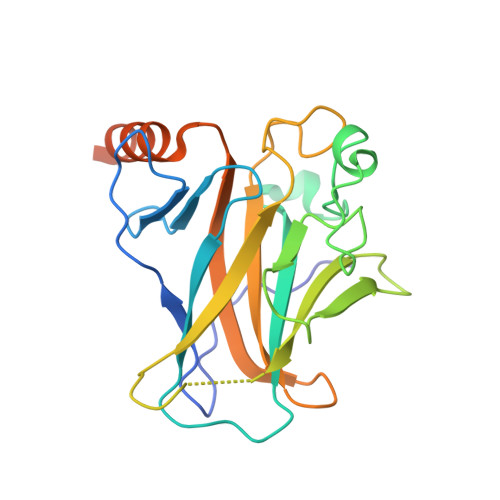Toward the Rational Design of P53-Stabilizing Drugs: Probing the Surface of the Oncogenic Y220C Mutant.
Basse, N., Kaar, J.L., Settanni, G., Joerger, A.C., Rutherford, T.J., Fersht, A.R.(2010) Chem Biol 17: 46
- PubMed: 20142040
- DOI: https://doi.org/10.1016/j.chembiol.2009.12.011
- Primary Citation of Related Structures:
2X0U, 2X0V, 2X0W - PubMed Abstract:
The p53 cancer mutation Y220C induces formation of a cavity on the protein's surface that can accommodate stabilizing small molecules. We combined fragment screening and molecular dynamics to assess the druggability of p53-Y220C and map ligand interaction sites within the mutational cavity. Elucidation of the binding mode of fragment hits by crystallography yielded a clear picture of how a drug might dock in the cavity. Simulations that solvate the protein with isopropanol found additional sites that extend the druggable surface. Moreover, structural observations and simulation revealed the dynamic landscape of the cavity, which improves our understanding of the impact of the mutation on p53 stability. This underpins the importance of considering flexibility of the cavity in screening for optimized ligands. Our findings provide a blueprint for the design of effective drugs that rescue p53-Y220C.
Organizational Affiliation:
Medical Research Council Centre for Protein Engineering, Cambridge, UK.
















